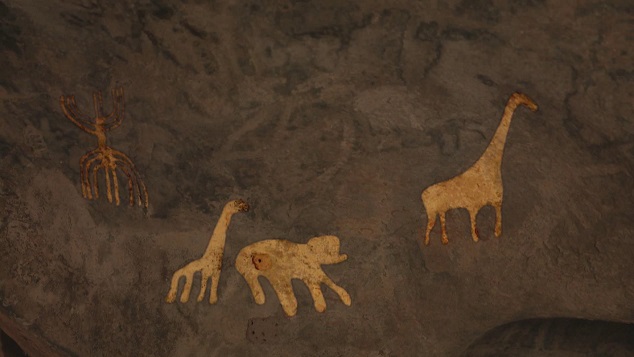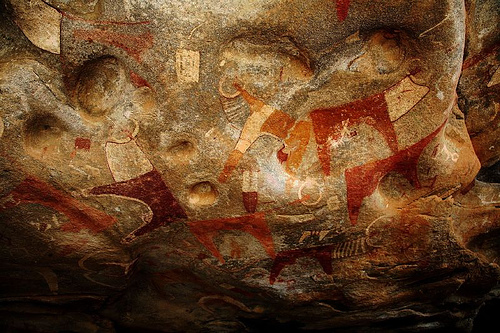|
Asha-Addo
Asha Addo () is a village located in the Zeila district of the Awdal Region, in Somaliland. The village lies on both sides of a wadi (a mostly dry riverbed) in the Guban, a desert-like coastal steppe. It has a mosque and 2 telecom masts. The main road from Djibouti to Somaliland's capital Hargeisa passes through Asha Addo; it is no more than a sandy track in these parts. Demographics As of 2012, the population of Asha Addo has been estimated to be 421. The inhabitants belong to the Somali ethnic group, with the Gadabuursi and Issa clan sharing the town. See also *Administrative divisions of Somaliland *Regions of Somaliland *Districts of Somaliland The Districts of Somaliland (also known as local government districts) are second-level administrative subdivisions of Somaliland, below the level of Regions of Somaliland, region. There are a total of 22 district, each district is rated A, B ... References Populated places in Awdal {{Somaliland-geo-stub ... [...More Info...] [...Related Items...] OR: [Wikipedia] [Google] [Baidu] |
Awdal
Awdal (, ) is an administrative region (''Administrative divisions of Somaliland, gobol'') in western Somaliland. It was separated from Woqooyi Galbeed and became a province in 1984 and is the most northwesterly province of Somaliland. To the east it borders Maroodi Jeex and Sahil, Somaliland, Sahil; to its north-west it borders Djibouti; to its south and south-west lies Ethiopia; and the Gulf of Aden to its north. The province has an estimated population of 1,010,566. The region comprises the four districts of Borama, the regional capital, Baki District, Baki, Lughaya District, Lughaya, and Zeila District, Zeila. Description Awdal (أودل) takes its name from the medieval Adal Sultanate (عَدَل), which was originally centered on Zeila. The area along the Ethiopian border is abundant with ruined cities, which were described by the British explorer Richard F. Burton. Geologically, much of the Awdal region is located in the Arabian Plate. Demographics The Awdal Region ... [...More Info...] [...Related Items...] OR: [Wikipedia] [Google] [Baidu] |
Countries Of The World
The following is a list providing an overview of sovereign states around the world with information on their status and recognition of their sovereignty. The 205 listed states can be divided into three categories based on membership within the United Nations System: 193 member states of the United Nations, UN member states, two United Nations General Assembly observers#Current non-member observers, UN General Assembly non-member observer states, and ten other states. The ''sovereignty dispute'' column indicates states having undisputed sovereignty (188 states, of which there are 187 UN member states and one UN General Assembly non-member observer state), states having disputed sovereignty (15 states, of which there are six UN member states, one UN General Assembly non-member observer state, and eight de facto states), and states having a political status of the Cook Islands and Niue, special political status (two states, both in associated state, free association with New ... [...More Info...] [...Related Items...] OR: [Wikipedia] [Google] [Baidu] |
Regions Of Somaliland
The regions of Somaliland (; ) is divided into six administrative regions, Awdal, Sahil, Maroodi-Jeeh, Togdheer, Sanaag and Sool. These are in turn subdivided into twenty-two districts. Regions of Somaliland are the primary geographical divisions through which Somaliland is administered. A distinction is made between districts of grades A, B, C and D, with the classification being based on population, area, economy and production. Regions History British territory and independence era The local administration of British Somaliland (1884-June 26, 1960) was stipulated primarily by the Local Government Ordinance of 1953. The ordinance established councils in six districts that had divided Somaliland since 1944. The ordinance continued to be used after independence as the State of Somaliland (June 26-July 1, 1960). At the time of the integration with Italian Somaliland on July 1, 1960, there were the following six districts. *Berbera *Borama *Burao *Erigavo *Harge ... [...More Info...] [...Related Items...] OR: [Wikipedia] [Google] [Baidu] |
Administrative Divisions Of Somaliland
The administrative division of Somaliland are organized into three hierarchical levels. consists of 6 Regions of Somaliland, regions and 22 Districts of Somaliland, districts. Districts in turn contain villages. In addition, the capital Hargeisa has its own law (capital law) that is different from the law that defines administrative divisions. The administrative-territorial division of the country is established by the Law of Somaliland No. 23/2002 (), which was finally approved in 2007. Somaliland is a self-declared List of states with limited recognition, unrecognized sovereign state in the Horn of Africa, internationally considered to be part of Somalia. History Before March 21, 2008, the Somaliland government continued to use the six administrative regions covered by Somalia at the time of unification: Awdal, Waqooyi Gelbeed, Sanaag, Sool, Togdheer, Sahil. On March 22 of the same year, President of Somaliland, President Dahir Riyale Kahin issued the "Presidential Press St ... [...More Info...] [...Related Items...] OR: [Wikipedia] [Google] [Baidu] |
Zeila District
Zeila District () is a district in western Somaliland. Its capital is at Zeila. Demographics The town of Zeila is primarily inhabited by people from the Somali ethnic group, with the Gadabuursi subclan of the Dir especially well represented. The Issa subclan of the Dir are especially well represented in the wider Zeila District. Tim Glawion (2020) describes the clan demographics of both the town of Zeila and the wider Zeila District: "Three distinct circles can be distinguished based on the way the security arena is composed in and around Zeila: first, Zeila town, the administrative centre, which is home to many government institutions and where the mostly ethnic Gadabuursi/Samaron inhabitants engage in trading or government service activities; second, Tokhoshi, an artisanal salt mining area eight kilometres west of Zeila, where a mixture of clan and state institutions provide security and two large ethnic groups (Ciise and Gadabuursi/Samaron) live alongside one another; thir ... [...More Info...] [...Related Items...] OR: [Wikipedia] [Google] [Baidu] |
Somaliland
Somaliland, officially the Republic of Somaliland, is an List of states with limited recognition, unrecognised country in the Horn of Africa. It is located in the southern coast of the Gulf of Aden and bordered by Djibouti to the northwest, Ethiopia to the south and west, and Somalia to the east. Its claimed territory has an area of , with approximately 6.2 million people as of 2024. The capital and largest city is Hargeisa. Various Somali Muslim kingdoms were established in the area during the early Islamic period, including in the 14th to 15th centuries the Zeila-based Adal Sultanate. In the early modern period, successor states to the Adal Sultanate emerged, including the Isaaq Sultanate which was established in the middle of the 18th century. In the late 19th century, the United Kingdom signed agreements with various clans in the area, establishing the British Somaliland, Somaliland Protectorate, which was formally granted independence by the United Kingdom as the Sta ... [...More Info...] [...Related Items...] OR: [Wikipedia] [Google] [Baidu] |
Djibouti City
Djibouti (also called Djibouti City and Jibuti in early Western texts) is the capital city of the Djibouti, Republic of Djibouti. It is located in the coastal Djibouti Region on the Gulf of Tadjoura. Djibouti has a population of around 780,000 inhabitants, which counts for 73% of the country's population. The settlement was founded in 1888 by the French, on land leased from the ruling Somali and Afar Sultans. During the ensuing period, it served as the capital of French Somaliland and its successor the French Territory of the Afars and Issas. History There is evidence of human settlement on the eastern coastline of Djibouti dating back to the Bronze Age. From 1862 until 1894, the land to the north of the Gulf of Tadjoura was called ''Obock'' and was ruled by Issa clan, Issa and Afar people, Afar Sultans, local authorities with whom France signed various treaties between 1883 and 1887 to first gain a foothold in the region.Raph Uwechue, ''Africa year book and who's who'', (Afr ... [...More Info...] [...Related Items...] OR: [Wikipedia] [Google] [Baidu] |
Hargeisa
Hargeisa ( ; ; ) is the capital and largest city of the Republic of Somaliland, a ''List of states with limited recognition, de facto'' sovereign state in the Horn of Africa, still considered internationally to be part of Somalia. It is also the regional capital of the Maroodi Jeex region of Somaliland. Hargeisa was founded as a watering and trading stop between the coast and the interior by the Isaaq Sultanate. Initially it served as a watering well for the vast livestock of the Isaaq clan that inhabited that specific region and later were joined by other Isaaq clans that currently inhabit Hargeisa. In 1960, the Somaliland Protectorate gained independence from the United Kingdom and as scheduled united days later with the Trust Territory of Somaliland (former Italian Somaliland) to form the Somali Republic on 1 July.Encyclopædia Britannica, ''The New Encyclopædia Britannica'', (Encyclopædia Britannica: 2002), p.835 Up to 90% of the city was destroyed during the Isaaq genoci ... [...More Info...] [...Related Items...] OR: [Wikipedia] [Google] [Baidu] |
Somalis
The Somali people (, Wadaad's writing, Wadaad: , Arabic: ) are a Cushitic peoples, Cushitic ethnic group and nation native to the Somali Peninsula. who share a common ancestry, culture and history. The Lowland East Cushitic languages, East Cushitic Somali language is the shared mother tongue of ethnic Somalis, which is part of the Cushitic languages, Cushitic branch of the Afroasiatic languages, Afroasiatic language family. They are predominantly Sunni Islam, Sunni Muslim.Mohamed Diriye Abdullahi, ''Culture and Customs of Somalia'', (Greenwood Press: 2001), p.1 Forming one of the largest ethnic groups on the continent, they cover one of the most expansive landmasses by a single ethnic group in Africa. According to most scholars, the ancient Land of Punt and its native inhabitants formed part of the ethnogenesis of the Somali people. This ancient historical kingdom is where a great portion of their cultural traditions and ancestry are said to derive from.Egypt: 3000 Years of ... [...More Info...] [...Related Items...] OR: [Wikipedia] [Google] [Baidu] |
Gadabuursi
The Gadabuursi (Somali language, Somali: ''Gadabuursi'', Arabic language, Arabic: جادابورسي), also known as ''Samaroon'' (Arabic language, Arabic: ''قبيلة سَمَرُون)'', is a northern Somali clan, a sub-division of the Dir (clan), Dir clan family.I. M. Lewis (1959) The Gadabuursi are geographically spread out across three countries: Ethiopia, Somaliland and Djibouti. Among all of the Gadabuursi inhabited regions of the Horn of Africa, Ethiopia is the country where the majority of the clan reside. In Ethiopia, the Gadabuursi are mainly found in the Somali Region, but they also inhabit the Harar, Dire Dawa and Oromia Region, Oromia regions. In Somaliland, the Gadabuursi are the predominant clan of the Awdal Region.UN (1999) Somaliland: Update to SML26165.E of 14 February 1997 on the situation in Zeila, including who is controlling it, whether there is fighting in the area, and whether refugees are returning. "Gadabuursi clan dominates Awdal region. As a res ... [...More Info...] [...Related Items...] OR: [Wikipedia] [Google] [Baidu] |
Issa (clan)
The Issa (also spelled Esa, or Aysa) (, ) is a northern Somali clan, a sub-division of the Dir clan family. Overview As a Dir sub-clan, the Issa have immediate lineal ties with the Gadabuursi, Akisho, the Surre (Abdalle and Qubeys), the Biimaal (who the Gaadsen also belong to), the Bajimal, the Bursuk, the Madigan Dir, the Gurgura, the Garre (the Quranyow sub-clan to be precise as they claim descent from Dir), Gurre, Gariire, other Dir sub-clans and they have lineal ties with the Hawiye (Irir), Hawadle, Ajuran, Degoodi, Gaalje'el clan groups, who share the same ancestor Samaale.The Quranyo section of the Garre claim descent from Dirr, who are born of the Irrir Samal. UNDP Paper in Kenya http://www.undp.org/content/dam/kenya/docs/Amani%20Papers/AP_Volume1_n2_May2010.pdf The Issa clan has produced numerous noble Somali men and women over the centuries, including multiple Kings (Ughaz). Throughout their known history the Issa where known for their military strength and ... [...More Info...] [...Related Items...] OR: [Wikipedia] [Google] [Baidu] |







